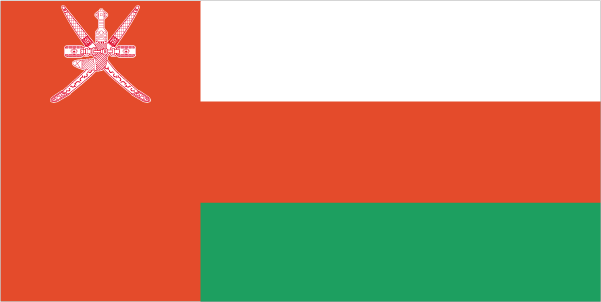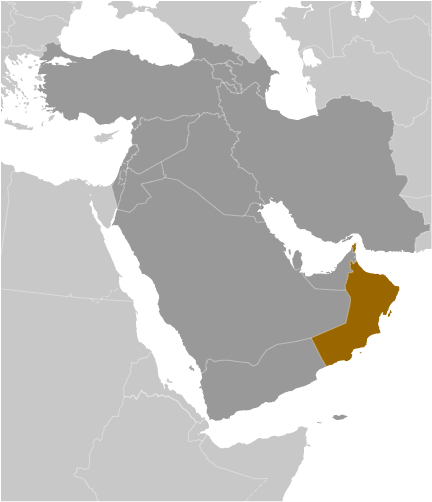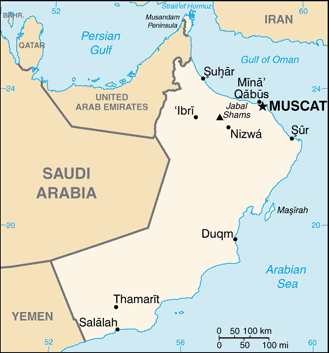|
Economy - overview:
|

|
|
Oman is a middle-income economy that is heavily dependent on dwindling oil resources. Because of declining reserves and a rapidly growing labor force, Muscat has actively pursued a development plan that focuses on diversification, industrialization, and privatization, with the objective of reducing the oil sector's contribution to GDP to 9% by 2020 and creating more jobs to employ the rising numbers of Omanis entering the workforce. Tourism and gas-based industries are key components of the government's diversification strategy. However, increases in social welfare benefits, particularly since the Arab Spring, will challenge the government's ability to effectively balance its budget if oil revenues decline. By using enhanced oil recovery techniques, Oman succeeded in increasing oil production, giving the country more time to diversify, and the increase in global oil prices through 2011 provided the government greater financial resources to invest in non-oil sectors. In 2012, continued surpluses resulting from sustained high oil prices and increased enhanced oil recovery allowed the government to maintain growth in social subsidies and public sector job creation. However, the Sultan made widely reported statements indicating this would not be sustainable, and called for expanded efforts to support SME development and entrepreneurship. Government agencies and large oligarchic group companies heeded his call, announcing new initiatives to spin off non-essential functions to entrepreneurs, incubate new businesses, train and mentor up and coming business people, and provide financing for start-ups. In response to fast growth in household indebtedness, the Central Bank reduced the ceiling on personal interest loans from 8 to 7%, lowered mortgage rates, capped the percentage of consumer loans at 50% of borrower's salaries for personal loans and 60% for housing loans, and limited maximum repayment terms to 10 and 25 years respectively. In 2012 the Central Bank also issued final regulations governing Islamic banking and two full-fledged Islamic banks held oversubscribed IPOs while four traditional banks opened sharia-compliant Islamic windows.
|
|
|
GDP (purchasing power parity):
|

|
|
$90.66 billion (2012 est.)
country comparison to the world: 76
$86.38 billion (2011 est.)
$81.92 billion (2010 est.)
note:
data are in 2012 US dollars
|
|
|
GDP (official exchange rate):
|

|
|
$79.97 billion (2012 est.)
|
|
|
GDP - real growth rate:
|

|
|
5% (2012 est.)
country comparison to the world: 59
5.4% (2011 est.)
5% (2010 est.)
|
|
|
GDP - per capita (PPP):
|

|
|
$28,500 (2012 est.)
country comparison to the world: 53
$28,000 (2011 est.)
$27,500 (2010 est.)
note:
data are in 2012 US dollars
|
|
|
GDP - composition by sector:
|

|
|
agriculture: 1.5%
industry:
50.4%
services:
48.1% (2012 est.)
|
|
|
Labor force:
|

|
|
968,800
country comparison to the world: 143
note:
about 60% of the labor force is non-national (2007)
|
|
|
Labor force - by occupation:
|

|
|
agriculture: NA%
industry:
NA%
services:
NA%
|
|
|
Unemployment rate:
|

|
|
15% (2004 est.)
country comparison to the world: 145
|
|
|
Population below poverty line:
|

|
|
NA%
|
|
|
Household income or consumption by percentage share:
|

|
|
lowest 10%: NA%
highest 10%:
NA%
|
|
|
Investment (gross fixed):
|

|
|
25.5% of GDP (2012 est.)
country comparison to the world: 45
|
|
|
Budget:
|

|
|
revenues: $35.55 billion
expenditures:
$30.49 billion (2012 est.)
|
|
|
Taxes and other revenues:
|

|
|
44.5% of GDP (2012 est.)
country comparison to the world: 32
|
|
|
Budget surplus (+) or deficit (-):
|

|
|
6.3% of GDP (2012 est.)
country comparison to the world: 10
|
|
|
Public debt:
|

|
|
3.6% of GDP (2012 est.)
country comparison to the world: 152
3.8% of GDP (2011 est.)
|
|
|
Inflation rate (consumer prices):
|

|
|
3.5% (2012 est.)
country comparison to the world: 97
4.1% (2011 est.)
|
|
|
Central bank discount rate:
|

|
|
2% (31 December 2010 est.)
country comparison to the world: 144
0.05% (31 December 2009 est.)
|
|
|
Commercial bank prime lending rate:
|

|
|
6% (31 December 2012 est.)
country comparison to the world: 138
6.19% (31 December 2011 est.)
|
|
|
Stock of narrow money:
|

|
|
$8.671 billion (31 December 2012 est.)
country comparison to the world: 80
$7.971 billion (31 December 2011 est.)
|
|
|
Stock of broad money:
|

|
|
$71.42 billion (31 December 2010 est.)
country comparison to the world: 62
$63.16 billion (31 December 2009 est.)
|
|
|
Stock of domestic credit:
|

|
|
$26.2 billion (31 December 2012 est.)
country comparison to the world: 74
$23.18 billion (31 December 2011 est.)
|
|
|
Market value of publicly traded shares:
|

|
|
$19.72 billion (31 December 2011)
country comparison to the world: 64
$20.27 billion (31 December 2010)
$17.3 billion (31 December 2009)
|
|
|
Agriculture - products:
|

|
|
dates, limes, bananas, alfalfa, vegetables; camels, cattle; fish
|
|
|
Industries:
|

|
|
crude oil production and refining, natural and liquefied natural gas (LNG) production; construction, cement, copper, steel, chemicals, optic fiber
|
|
|
Industrial production growth rate:
|

|
|
3.5% (2011 est.)
country comparison to the world: 79
|
|
|
Current account balance:
|

|
|
$10.22 billion (2012 est.)
country comparison to the world: 25
$10.67 billion (2011 est.)
|
|
|
Exports:
|

|
|
$48.43 billion (2012 est.)
country comparison to the world: 60
$47.09 billion (2011 est.)
|
|
|
Exports - commodities:
|

|
|
petroleum, reexports, fish, metals, textiles
|
|
|
Exports - partners:
|

|
|
China 30.2%, South Korea 10.9%, UAE 10.6%, Japan 10.4%, India 9.2%, Thailand 5.3%, US 4.6% (2011)
|
|
|
Imports:
|

|
|
$23.37 billion (2012 est.)
country comparison to the world: 73
$21.35 billion (2011 est.)
|
|
|
Imports - commodities:
|

|
|
machinery and transport equipment, manufactured goods, food, livestock, lubricants
|
|
|
Imports - partners:
|

|
|
UAE 27.7%, Japan 11.9%, US 6.1%, India 5.4%, China 4.2%, Saudi Arabia 4.1%, Germany 4% (2011)
|
|
|
Reserves of foreign exchange and gold:
|

|
|
$15.87 billion (31 December 2012 est.)
country comparison to the world: 64
$14.37 billion (31 December 2011 est.)
|
|
|
Debt - external:
|

|
|
$9.768 billion (31 December 2012 est.)
country comparison to the world: 94
$9.033 billion (31 December 2011 est.)
|
|
|
Stock of direct foreign investment - at home:
|

|
|
$NA
|
|
|
Stock of direct foreign investment - abroad:
|

|
|
$NA
|
|
|
Exchange rates:
|

|
|
Omani rials (OMR) per US dollar -
0.3845 (2012 est.)
0.3845 (2011 est.)
0.3845 (2010 est.)
0.3845 (2009)
0.3845 (2008)
|
|
|
Fiscal year:
|

|
|
calendar year
|
|
|
|





 )
)



